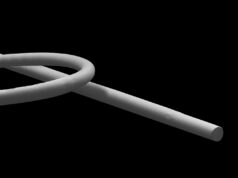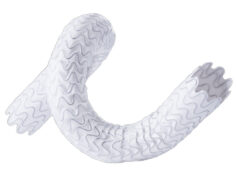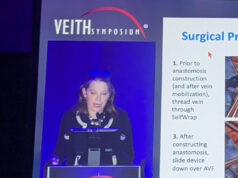
Researchers from the University of Alabama at Birmingham (UAB; Birmingham, USA) and US firm Endomimetics are working to develop a long-sought-after, effective therapy that will promote healthy maturation in arteriovenous fistulas (AVFs)—and recently reported preclinical progress on this front in the journal Biomaterials, detailing the promise shown by an experimental AVF gel solution.
They report that the gel aided in the creation of fully developed fistulas in rodents and led to significantly improved vascular access outcomes.
A UAB press release outlining these findings states that—despite the fact they offer a critical lifeline for haemodialysis patients—up to 60% of AVFs fail to develop adequately due to overgrowth inside the patient’s blood vessel, known as smooth muscle cell hyperplasia, and inadequate expansion of the vein. It adds, however, that this novel experimental gel may help to reduce those high failure rates.
The UAB and Endomimetics researchers first showed that nitric oxide (NO) plays an important regulatory role in AVF development. Mice that overexpressed endothelial nitric oxide synthase—an enzyme that synthesises NO—had reduced intimal hyperplasia development and vein narrowing in their AVFs when compared to control mice. As such, the researchers reasoned that finding a way to release NO at a newly formed AVF might support fistula development and maturation.
They developed a self-assembling nanomatrix gel capable of releasing a burst of NO in the first 24 hours, followed by sustained NO release across the following four weeks.
When the gel was applied to a newly joined artery-vein anastomosis, intended to create an AVF in rats, the gel persisted at that site and the rats showed a reduction of intimal hyperplasia formation in excess of 70%, as well as an improvement in vein diameter and a smoother blood flow, compared to controls.
In reporting the experimental study’s results, corresponding and co-senior author Timmy Lee (Department of Medicine and Division of Nephrology, University of Alabama at Birmingham, Birmingham, USA) et al conclude: “Direct application of the NO-releasing nanomatrix gel to the AVF anastomosis immediately following AVF creation may enhance AVF development, thereby providing long-term and durable vascular access for haemodialysis.”
In addition, Endomimetics CEO Joseph Garner stated that showing the AVF gel is able to substantially increase the success rate of fistula development could result in dramatic improvements to the quality of life of patients, as well as a significant decrease in the cost of creating AVFs.
Use of the gel to promote AVF development, he added, has been supported by National Institutes of Health (NIH) small business innovative research (SBIR) grants totalling more than US$4.5 million.
Endomimetics has also completed SBIR Phase I and II grants—indicating the gel significantly improved vascular access via a fully developed AVF—in both small and large animal models. A recently awarded SBIR Phase IIB grant will support the large-scale manufacturing and safety studies required to pursue US Food and Drug Administration (FDA) approval of the gel as an Investigational New Drug (IND), the UAB release notes.











